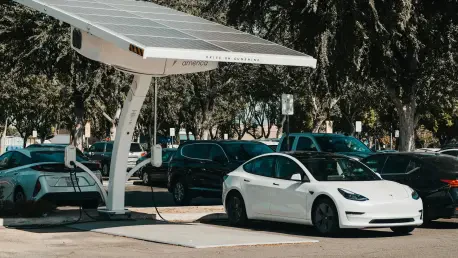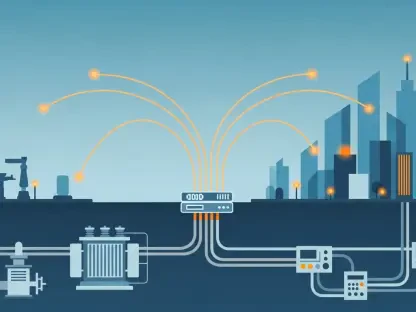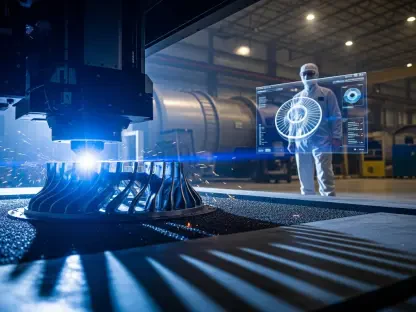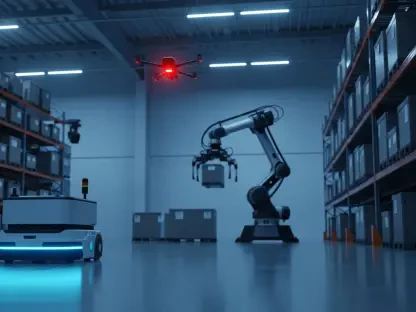What happens when a titan of innovation stumbles over the basics of safety compliance? Tesla, the electric vehicle giant, finds itself in the crosshairs of the National Highway Traffic Safety Administration (NHTSA) for repeatedly missing deadlines to report crashes linked to its self-driving technology. Imagine a world where autonomous vehicles promise freedom from human error, yet the data meant to ensure their safety arrives months late. This isn’t just a bureaucratic hiccup—it’s a signal of deeper issues that could reshape trust in autonomous driving. Dive into this unfolding story of technology, accountability, and the high stakes of public safety.
The significance of this probe extends beyond mere paperwork. As Tesla pushes the boundaries with self-driving taxis and over-the-air software updates for millions of vehicles, the NHTSA’s investigation raises a critical question: can a company driving the future of transportation keep up with the fundamental demands of safety oversight? With over 2,300 crashes reported since the reporting rules began, Tesla’s track record dwarfs that of other automakers, spotlighting both its market dominance and the intense scrutiny it faces. This story isn’t just about delays—it’s about ensuring that innovation doesn’t outpace responsibility in an industry poised to transform daily life.
Why Tesla’s Crash Reports Lag—and Why It’s a Big Deal
Tesla’s ambition to lead the autonomous vehicle race is undeniable, but the NHTSA has flagged a glaring issue: crash reports for its self-driving systems are often submitted months after the mandated five-day window. This delay isn’t a minor oversight; it hinders regulators’ ability to assess risks and implement timely safety measures. The federal agency’s concern centers on whether these lapses reflect deeper flaws in how Tesla monitors and responds to incidents on the road.
Beyond the immediate impact, late reporting casts a shadow over public confidence in autonomous technology. When a company pioneering self-driving taxis and driver-assistance systems struggles with basic compliance, it fuels skepticism among consumers already wary of machines taking the wheel. The NHTSA’s focus isn’t just on catching up with paperwork—it’s on ensuring that every crash is a lesson learned swiftly to prevent future harm.
This issue also ties into broader safety implications. With Tesla reporting a staggering number of incidents—more than any other automaker—the timeliness of data becomes a linchpin for identifying patterns or systemic failures. If delays obscure critical insights, the path to safer roads grows murkier, leaving drivers, passengers, and pedestrians at potential risk.
Tesla’s Autonomy Push Meets Regulatory Roadblocks
Tesla’s vision of a driverless future is taking shape with self-driving taxi services rolling out in cities like Austin and San Francisco, complete with safety drivers as required by local rules. This bold expansion, coupled with plans to enable self-driving capabilities in millions of vehicles via software updates, positions the company as a trailblazer. Yet, the NHTSA’s probe into delayed crash reporting reveals a friction point between rapid innovation and regulatory demands.
Compounding the challenge are external pressures impacting Tesla’s momentum. Declining sales and profits, partly linked to consumer boycotts over CEO Elon Musk’s political stances, add strain to the company’s operations. Musk’s vocal support for controversial figures and policies has sparked backlash, creating a turbulent backdrop as Tesla navigates safety investigations and compliance hurdles.
The clash between ambition and oversight underscores a pivotal tension. As Tesla scales its autonomous offerings, regulators are zeroing in on whether the company can sustain its growth without sacrificing accountability. For everyday drivers eyeing a robotaxi ride, this moment serves as a reminder that cutting-edge tech must be matched by rigorous adherence to safety standards.
Digging Into the NHTSA Probe: Delays and Data Gaps
At the heart of the NHTSA investigation are three pressing concerns about Tesla’s crash reporting practices. First, consistent delays in filing reports—sometimes by months—point to potential systemic issues in tracking and documenting incidents. Second, questions linger over the completeness of the data submitted, with fears that some crashes might not be reported at all. Third, Tesla’s sheer volume of reported incidents, totaling 2,308 under Level 2 driver-assistance rules, overshadows the combined total of 2,600 from all other automakers, reflecting both its market share and the scale of scrutiny it faces.
Adding to the complexity is a separate NHTSA inquiry into 2.4 million Tesla vehicles for self-driving system flaws in low-visibility conditions like fog. This probe, tied to several accidents including a fatal one, amplifies concerns about the technology’s reliability under challenging circumstances. The overlap of these investigations paints a picture of a company grappling with the dual demands of rapid deployment and meticulous safety validation.
These issues aren’t abstract—they translate into real-world risks for drivers and pedestrians alike. When data isn’t reported promptly or fully, regulators lose the ability to act swiftly on emerging hazards. For Tesla, addressing these gaps isn’t just about satisfying bureaucratic rules; it’s about reinforcing trust in a technology that promises to redefine transportation.
Expert Insights: Decoding Tesla’s Compliance Struggles
The numbers tell a stark story: Tesla’s 2,308 reported crashes tower over the industry’s total, a disparity that highlights its dominant role in autonomous tech and the weight of responsibility it carries. NHTSA filings reveal Tesla’s claim that “data collection issues” caused the reporting delays, though the agency remains unconvinced, stressing the need for transparency. This skepticism signals a broader demand for clarity in how incidents are tracked and communicated.
Industry voices add depth to the conversation. A prominent safety expert recently noted, “Timely crash data isn’t just a formality—it’s the foundation for preventing future tragedies.” Such perspectives emphasize that delays aren’t merely administrative; they can stall critical safety improvements. Meanwhile, investor confidence has wavered, with Tesla’s stock dipping slightly to $321 on the day of the NHTSA announcement, reflecting unease amid Musk’s public disputes over federal budget policies.
These insights reveal a critical juncture for Tesla. Balancing its pioneering status with the trust of regulators and the public requires more than innovation—it demands a commitment to accountability. As scrutiny intensifies, the company’s ability to address these concerns will shape perceptions of autonomous driving’s viability.
Charting the Path Forward: Tesla’s Next Moves and Industry Lessons
For Tesla, the road ahead demands concrete action to resolve the NHTSA’s concerns. Streamlining crash reporting through improved internal systems or dedicated compliance teams is essential to meet the five-day deadline consistently. Transparency must also take center stage, with proactive audits to confirm that no incidents have been overlooked in past submissions. Additionally, tackling safety issues—especially in low-visibility conditions—requires thorough testing and open dialogue with regulators before expanding services like robotaxis.
The broader autonomous vehicle industry can draw valuable lessons from this situation. Companies must prioritize robust reporting mechanisms from the outset, ensuring that innovation doesn’t bypass safety protocols. For regulators, this case underscores the need for stricter oversight and real-time data access to keep pace with fast-evolving technologies. Consumers, too, play a role by demanding accountability from tech leaders shaping the future of transportation.
Reflecting on this chapter, the investigation into Tesla’s delayed crash reporting stood as a defining moment in the journey toward autonomous driving. It highlighted the delicate balance between pushing technological boundaries and safeguarding public trust. Looking back, the resolution of these challenges prompted vital discussions on how to integrate safety with progress. Moving forward, stakeholders across the board were urged to advocate for stronger compliance frameworks, ensuring that the promise of self-driving vehicles was realized without compromising the well-being of those on the road.









